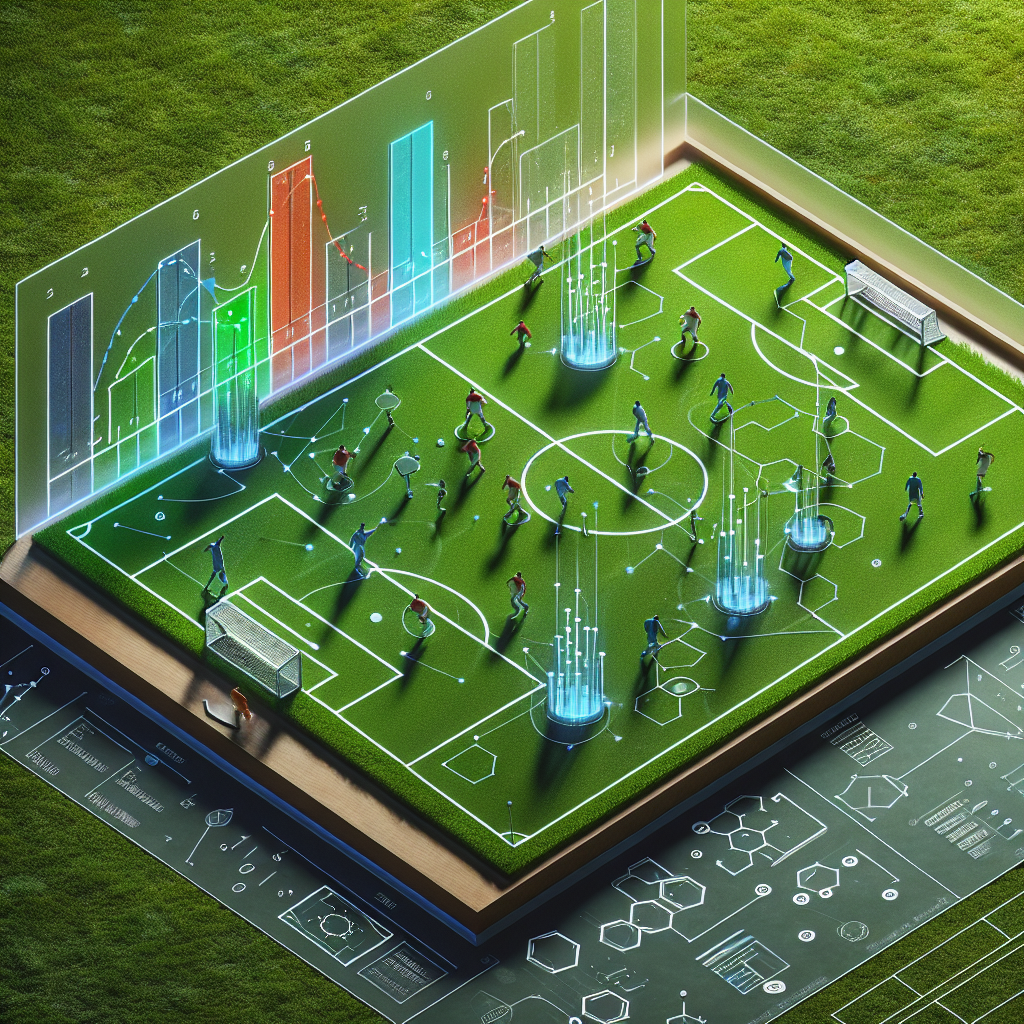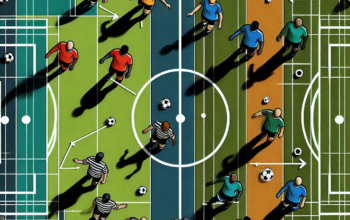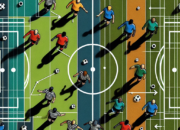Introduction
The relationship between soccer scores and team tactics is a dynamic aspect of the game that has continued to evolve through the years. In 2025, teams are employing increasingly sophisticated strategies that significantly affect their scoring ability. Whether it’s a high-pressing style, possession-based play, or a counter-attacking approach, the tactics implemented by coaches directly influence the number of goals their teams score. Understanding this relationship is crucial not only for fans and analysts but also for players aspiring to comprehend the intricate dance of strategy and execution that defines soccer today.
The Evolution of Team Tactics in Soccer
Over the decades, soccer tactics have undergone a radical transformation. Once dominated by rigid formations such as the 4-4-2, contemporary strategies are fluid and adaptable, often changing even within a single match. In 2025, the trend favors tactical flexibility—coaches must be prepared to adjust their game plans based on the strengths and weaknesses of both their team and their opponents. This evolution has been fueled by advancements in analytics and data-driven decision-making, which help coaches grasp detailed insights about scoring patterns and the effectiveness of various tactics.
Moreover, the integration of modern training techniques and sports science has allowed teams to implement complex tactical systems. The possession-based gameplay, as popularized by teams like Barcelona in the late 2000s, emphasizes ball control and strategic passing to create scoring opportunities. Conversely, a counter-attacking strategy gains momentum when exploiting the opponent’s vulnerabilities in transition. The ability of a team to maintain its tactical discipline while adapting to the flow of the game directly correlates with their success on the scoreboard.
The Impact of Player Roles on Scoring
Player roles are increasingly specialized within soccer, influencing the tactical setup of teams. For instance, the emergence of “false nines” and versatile wing-backs has reshaped conventional positions, enabling teams to adjust their attacking plays and defensive setups. In 2025, forwards like Lionel Messi, who play deeper and facilitate play, create additional scoring opportunities through their vision and passing abilities. Consequently, defenders are also expected to contribute to scoring, often making overlapping runs to confuse opposing defenses.
Furthermore, the rise of data analytics plays a crucial role in how player roles evolve. Coaches now rely on comprehensive metrics to assess players’ performance and adjust their positions and responsibilities accordingly. This approach ensures that each player not only contributes to the team’s scoring potential but also helps in executing the overall tactical plan effectively. A clear understanding of each player’s strengths and tactical awareness can significantly influence the outcome of matches, leading to higher scores.
Scoring Trends Influenced by Team Formations
The formation chosen by a team significantly impacts how offensively or defensively they play, which in turn affects scoring outcomes. In 2025, formations such as the 3-5-2 and 4-2-3-1 are increasingly popular due to their balance between defense and attack. A formation like 3-5-2 can press opponents effectively while allowing wing-backs to push high up the pitch, creating numerous scoring chances. Conversely, a more defensive setup like the 4-4-2 often leads to a more conservative approach, which may limit scoring opportunities but enhances defensive stability.
Moreover, the adaptation of pressing systems, such as gegenpressing, has transformed how teams approach the game. Teams employing high-pressing tactics look to regain possession quickly in advanced areas of the pitch, leading to sudden scoring opportunities. Studies show that teams utilizing pressing tactics scored significantly more goals in the 2025 season, revealing a direct correlation between aggressive pressing and high scoring matches. This tactical development illustrates the necessity for teams to not only choose the right formation but also adapt their style to counter new trends within the sport.
Analyzing Success Through Historical Data
Statistical analysis has become an integral tool in understanding the relationship between soccer scores and team tactics. By analyzing historical scoring data, teams, coaches, and sports analysts can identify patterns that reveal which tactical approaches yield the best results. For example, clubs that consistently adopted an aggressive attack-centric style often scored higher than those favoring a balanced or defensive approach. This data helps coaches refine their tactics to maximize goal potential.
Additionally, live match data analytics have become pivotal in influencing real-time tactical decisions. In the 2025 season, teams are increasingly using AI-driven platforms that analyze opponents’ weaknesses throughout the match. Coaches adjust their formations and tactics based on live feedback regarding how well their team scores in response to the opposition’s defensive setup. This level of interactive strategy reflects a sophisticated understanding of the relationship between soccer scores and evolving tactical methodologies.
Future Trends in Tactical Adaptation and Scoring
As soccer progresses into 2025 and beyond, we can anticipate even more innovations in tactics that will further impact how teams score. The incorporation of technology, such as virtual reality training and advanced simulation software, is expected to refine team tactics significantly. These innovations will allow teams to simulate various match scenarios, testing different tactical responses without any on-pitch consequences. This experimentation prepares teams for in-game situations and optimizes their scoring strategies.
Moreover, demographic shifts in player recruitment are anticipated to affect how tactics evolve. Clubs are increasingly searching for players who not only fit specific roles but also possess the adaptability to switch between various tactical frameworks. This trend towards versatile athletes ensures that teams can seamlessly transition between offensive and defensive tactics, influencing their scoring capabilities on-demand. As the game evolves, the interconnection between updated tactics and scoring will remain a crucial aspect of soccer that teams will continuously seek to optimize.
Conclusion
The relationship between soccer scores and team tactics is a compelling dimension of the beautiful game. By examining the evolution of tactics, the specialization of player roles, scoring trends influenced by formations, data-driven historical analysis, and future trends in tactical adaptation, we gain valuable insights into how teams seek to maximize their scoring potential. In 2025, understanding this relationship is more important than ever, as coaches and players leverage data and technology to gain a competitive edge. As the game continues to evolve, so too will the strategies employed, further enriching the soccer experience and its competitive landscape.
FAQs
How do tactics influence scoring in soccer?
Tactics influence scoring by determining the offensive and defensive approaches a team adopts during a match, affecting opportunities created and goals conceded.
What are some common tactical formations used in soccer today?
Common tactical formations include 4-4-2, 3-5-2, and 4-2-3-1, each offering unique advantages in terms of balance between offense and defense.
How has data analytics changed soccer tactics?
Data analytics allow teams to analyze performance metrics and historical data, enabling coaches to refine tactics based on evidence and trends rather than intuition alone.
What future trends are expected in soccer tactics?
Future trends may include greater incorporation of technology in training, increased versatility in player recruitment, and the use of AI for real-time tactical adjustments during matches.
Are certain teams known for specific tactical styles?
Yes, teams often become identified with specific tactical styles, such as Barcelona’s possession-based play or Borussia Dortmund’s high-pressing game, influencing their approach to scoring.






